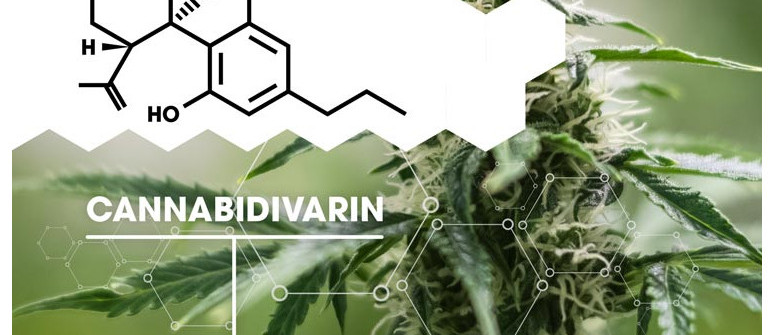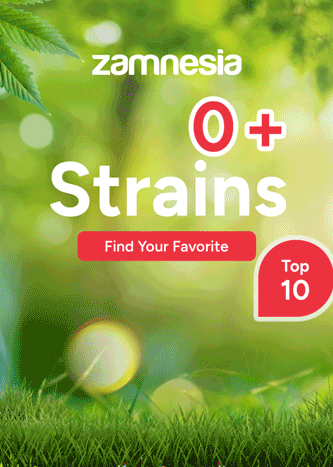What is cannabidivarin (CBDV)?

Cannabidivarin, or CBDV, is a non-psychoactive cannabinoid which may be essential in treating seizures caused by epilepsy and more. Click here for more info.
Cannabidivarin is a phytocannabinoid found in cannabis. It is a non-psychoactive compound, meaning it does not produce mind-altering effects like other cannabinoids such as THC.
CBDV is very similar in structure to cannabidiol (CBD). It is believed to be found in higher concentrations in indica cannabis varieties, especially landrace varieties from India.
THE MEDICAL POTENTIAL OF CBDV:
Unfortunately the research into cannabidivarin is still in its infancy. Below is a brief rundown of the scientific studies conducted on this cannabinoid so far and what they mean for the future of CBDV’s role in medicine.
CBDV: A KEY ANTICONVULSANT
In 2014, an Italian research team from the Endocannabinoid Research Group further studied the effects of both CBD and CBDV on epilepsy symptoms induced in rats.[1] Their study found that both CBD and CBDV dose-dependently interacted with TRPV1, a particular receptor in the human body known to detect and regulate body temperature as well as produce pain sensations.
TRPV1 has long been the prime target for the development of a wide variety of pain medication. The goal of these analgesics would be to reduce pain signals by desensitizing the TRPV1 receptor. One way to do this is to apply an agonist to the receptor for prolonged periods of time, as this eventually decreases TRPV1 activity.
The researchers then simulated an epileptic seizure using rat brain tissue and noted the effects of both cannabinoids on the development and strength of the seizure. They found that CBDV reduced both the intensity and duration of the epileptic bursts by essentially desensitizing TRPV1 receptors.
The researchers noted that these effects were similar to those of capsaicin, a known agonist of the TRPV1 receptor. However, the researchers noted an important difference between the two compounds; the effects of capsaicin on the multitude of the epileptic bursts was reversed by a specific TRPV1 antagonist. The effects of CBDV, on the other hand, were not.
These results demonstrate that CBDV has great potential in treating and moderating the duration and severity of epileptic seizures. However, the researchers also noted that the differences between CBDV and capsaicin suggest that CBDV’s anticonvulsant effects aren’ solely due to the way the way it interacts with TRPV1 receptors and that more studies need to be conducted in order to fully understand the effects of this cannabinoid.
In 2013, a group of researchers from the University of Reading and Otsuka Pharmaceutical Group also conducted a study on CBDV and it’s role in mediating the effects of epilepsy.[2] The study observed CBDV’s anticonvulsant effects on a molecular level, aiming to better understand how the cannabinoid provides relief from seizures and fits.
The study induced seizures in brain tissue using pentylenetetrazole and found that CBDV not only significantly decreased the severity of the seizures but also the duration. The researchers behind this study claimed, that these results help to strengthen the argument, that CBDV is clinically suitable as a treatment for seizures and fits caused by epilepsy.
CBDV AND NAUSEA
Besides its obvious anticonvulsant effects, CBDV has also been shown to reduce nausea in rats, which may greatly expand the medical potential of this cannabinoid.
In 2013, researchers from the Department of Psychology and Neuroscience Graduate Program at the University of Guelph, Canada, looked into this topic in more detail.[3] As part of their study (which was published in the British Journal of Pharmacology), the researchers used THCV, CBDV, and a variety of non-cannabinoids on rats to test their ability to produce conditioned gaping, a set of behaviours scientists use to measure nausea in lab rats (which traditionally cannot vomit and don’t display signs of nausea).
The study found that CBDV and THCV didn’t produce conditioned gaping in the rats at any stage during the trial In fact, at sufficient doses, both THCV and CBDV suppressed the conditioned gaping induced by other compounds, suggesting the compounds may have anti-emetic effects.
These results suggest that CBDV may help in treating nausea and vomiting, which may be useful in managing the symptoms of a wide variety of diseases as well as the side effects of some medication.
Other anti-emetic cannabinoids include THC, which is often used by cancer patients after chemotherapy, as well as HIV/AIDS-positive patients looking to fight off some of the symptoms of AR therapy.
WHERE TO FIND CBDV?
As we mentioned earlier, CBDV is believed to be found in higher concentrations in Indica landrace strains, hemp, and other low-THC strains. This is great for medicinal users looking to avoid the psychoactive effects produced by THC.
Remember that just because a strain comes from India or has low-concentrations of THC that doesn’t guarantee it will have high concentrations of CBDV. To ensure your cannabis has the cannabinoids you’re looking for, always rely on lab test results from trusted laboratories.
THE FUTURE OF CBDV
As we’ve seen in this post, the research into cannabidivarin is still in it’s infancy. This means that there’s still a lot to learn about how this unique cannabinoid affects our bodies, and how we might be able to use it as a medicine.
Luckily, as opinions and legislation about cannabis begin to change, researchers across the world will be able to work with cannabis much more easily and find out more CBDV and other cannabinoids just like it.
- ^ NCBI, Nonpsychotropic plant cannabinoids, cannabidivarin (CBDV) and cannabidiol (CBD), activate and desensitize transient receptor potential vanilloid 1 (TRPV1) channels in vitro: potential for the treatment of neuronal hyperexcitability., retrieved January-15-2019
Link - ^ Researchgate, Cannabidivarin (CBDV) suppresses pentylenetetrazole (PTZ)-induced increases in epilepsy-related gene expression, retrieved January-15-2019
Link - ^ NCBI, Evaluation of the potential of the phytocannabinoids, cannabidivarin (CBDV) and Δ(9) -tetrahydrocannabivarin (THCV), to produce CB1 receptor inverse agonism symptoms of nausea in rats., retrieved January-15-2019
Link




